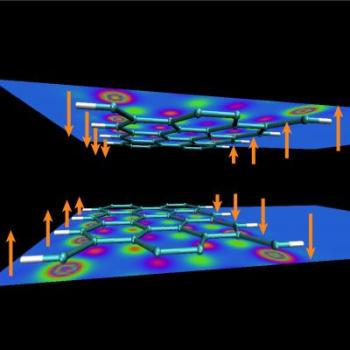According to a latest research performed at Rensselaer Polytechnic Institute in Troy, the application of common metals in the tablet computers, smart phones and other electronic equipments will be probably replaced by graphene.
 Stacked nanoribbons of graphene improves its ability to transmit electrical charges.
Stacked nanoribbons of graphene improves its ability to transmit electrical charges.
Researchers found that graphene may substitute the copper metals in chip pathways. This material is basically the charcoal or a graphite layer used in pencils and is a thick sheet of carbon atoms shaped as a chicken-wire fence.
A group of researchers, directed by Saroj Nayak, professor in Department of Physics, Applied Physics, and Astronomy at Rensselaer Computational Center for Nanotechnology Innovations (CCNI), made a research based on large-scale quantum simulations and identified that the electrical transmission ability of graphene will be improved by arranging thin graphene ribbons one on top of the other. This arrangement will comparatively reduce the gap between the conduction and valence bands to an acceptable range.
Nayak's recent research has been published in the journal ACS Nano, and is titled "Effect of Layer Stacking on the Electronic Structure of Graphene Nanoribbons." Normally graphene displays a band gap when formed into nanoribbons, which is not desirable for interconnects. This research demonstrates that by stacking the graphene nanoribbons one on top of the other, this band gap is considerably reduced.
According to Neerav Kharche, the study’s first author, the ideal thickness is a four to six layer graphene stack. Adding of more layer will not impact the band gap in any way.
Nayak stated that researchers are striving to manufacture the complete microprocessor including the transistor and interconnects with graphene. This objective is known as monolithic integration, and we may not need copper interconnects and silicon transistors anymore, he added.